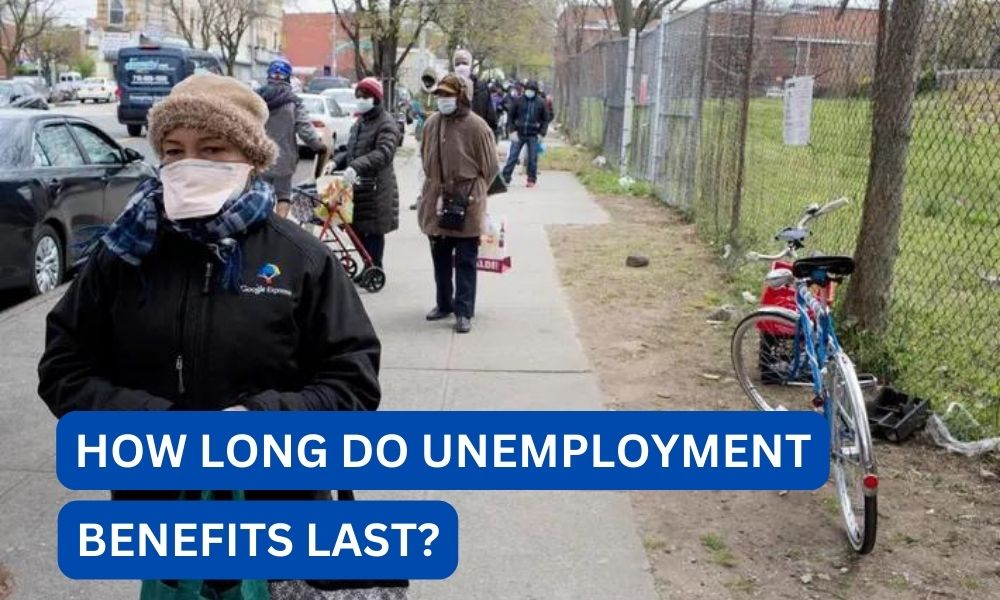Unemployment is a major concern for individuals and societies around the world. It is a situation where a person is willing and able to work but is unable to find employment. In such cases, unemployment benefits provide temporary financial assistance to individuals who have lost their jobs. These benefits are designed to help individuals meet their basic needs while they search for new employment opportunities. However, many people are unaware of how long these benefits last and what factors can affect their duration. In this article, we will explore the topic of how long unemployment benefits last and provide valuable insights for individuals who may be facing unemployment.
Contents
Understanding Unemployment Benefits
Unemployment benefits, also known as unemployment insurance, are government-provided financial assistance to individuals who have lost their jobs. These benefits are funded by taxes paid by employers and are administered by state governments in the United States. The purpose of unemployment benefits is to provide temporary financial support to individuals while they search for new employment opportunities.
In order to be eligible for unemployment benefits, individuals must meet certain criteria. These criteria may vary from state to state, but generally, individuals must have lost their job through no fault of their own, be actively seeking new employment, and have earned a minimum amount of wages during a specified period. Additionally, individuals must be able and available to work and must not have voluntarily quit their job without good cause.
Read:How to apply for caregiver benefits?Once an individual is deemed eligible for unemployment benefits, they will receive a weekly payment for a certain period of time. The amount of the payment and the duration of benefits may vary depending on the state and the individual’s previous earnings. In most cases, individuals can receive benefits for up to 26 weeks, but this can be extended during times of high unemployment.
How Long Do Unemployment Benefits Last?
The duration of unemployment benefits varies from state to state. In most states, individuals can receive benefits for up to 26 weeks. However, during times of high unemployment, the federal government may extend this period. For example, during the Great Recession of 2008, the federal government extended unemployment benefits to a maximum of 99 weeks in some states.
It is important to note that the duration of unemployment benefits is not a fixed number and can change depending on the economic conditions of a state. For example, if a state’s unemployment rate decreases, the duration of benefits may be reduced. On the other hand, if the unemployment rate increases, the duration of benefits may be extended.
Additionally, the duration of benefits may also be affected by the individual’s previous earnings. In some states, individuals may receive benefits for a longer period if they had a higher income before becoming unemployed. This is because the amount of benefits an individual receives is based on their previous earnings, and individuals with higher earnings may receive a higher weekly payment for a longer period of time.
Read:What age for full social security benefits: All you need to knowFactors That Affect the Duration of Unemployment Benefits
There are several factors that can affect the duration of unemployment benefits. These include the state’s unemployment rate, the individual’s previous earnings, and the availability of jobs in the individual’s field.
State’s Unemployment Rate
As mentioned earlier, the state’s unemployment rate is a major factor in determining the duration of unemployment benefits. If the unemployment rate is high, the duration of benefits may be extended to provide support to individuals who are struggling to find employment. On the other hand, if the unemployment rate is low, the duration of benefits may be reduced as there are more job opportunities available.
For example, during the COVID-19 pandemic, the unemployment rate in the United States reached a record high of 14.8% in April 2020. As a result, the federal government extended the duration of unemployment benefits to a maximum of 39 weeks in some states. This provided much-needed financial support to millions of individuals who lost their jobs due to the pandemic.
Previous Earnings
The individual’s previous earnings also play a role in determining the duration of unemployment benefits. As mentioned earlier, individuals with higher earnings may receive benefits for a longer period of time. This is because the amount of benefits an individual receives is based on their previous earnings, and individuals with higher earnings may receive a higher weekly payment for a longer period of time.
Read:How to delete secret benefits accountFor example, in California, individuals who earned more than $17,368 in their highest quarter of earnings can receive benefits for up to 26 weeks. On the other hand, individuals who earned less than $1,300 in their highest quarter of earnings can only receive benefits for up to 12 weeks.
Availability of Jobs
The availability of jobs in the individual’s field can also affect the duration of unemployment benefits. If there are limited job opportunities in the individual’s field, they may be eligible for extended benefits. This is because it may take longer for them to find suitable employment, and the extended benefits can provide them with financial support during this time.
For example, during the Great Recession, many individuals in the construction industry lost their jobs due to the housing market crash. As a result, the federal government extended unemployment benefits for up to 99 weeks in some states to provide support to these individuals while they searched for new employment opportunities.
Case Study: Unemployment Benefits in New York
To further understand how long unemployment benefits last, let’s take a look at a specific state – New York. In New York, the maximum duration of unemployment benefits is 26 weeks. However, during times of high unemployment, the federal government may extend this period.
For example, during the COVID-19 pandemic, the federal government extended unemployment benefits in New York to a maximum of 59 weeks. This was due to the high unemployment rate in the state, which reached 15.9% in April 2020. This extension provided much-needed financial support to individuals who lost their jobs due to the pandemic.
Additionally, in New York, the amount of benefits an individual receives is based on their previous earnings. The maximum weekly benefit amount is $504, and individuals can receive benefits for up to 26 weeks if they earned more than $11,088 in their highest quarter of earnings. On the other hand, individuals who earned less than $2,200 in their highest quarter of earnings can only receive benefits for up to 12 weeks.
Conclusion:
Unemployment benefits provide temporary financial assistance to individuals who have lost their jobs. The duration of these benefits varies from state to state and can be affected by factors such as the state’s unemployment rate, the individual’s previous earnings, and the availability of jobs in their field. It is important for individuals to understand how long these benefits last and what factors can affect their duration. This knowledge can help individuals plan their finances and make informed decisions while they search for new employment opportunities.
While unemployment benefits can provide much-needed financial support, it is important for individuals to actively search for new employment opportunities and not solely rely on these benefits. By staying updated on the job market and continuously improving their skills, individuals can increase their chances of finding suitable employment and reduce their reliance on unemployment benefits.
Overall, unemployment benefits play a crucial role in supporting individuals during times of unemployment. By understanding how long these benefits last and the factors that can affect their duration, individuals can better navigate through this challenging period and work towards finding new employment opportunities.









